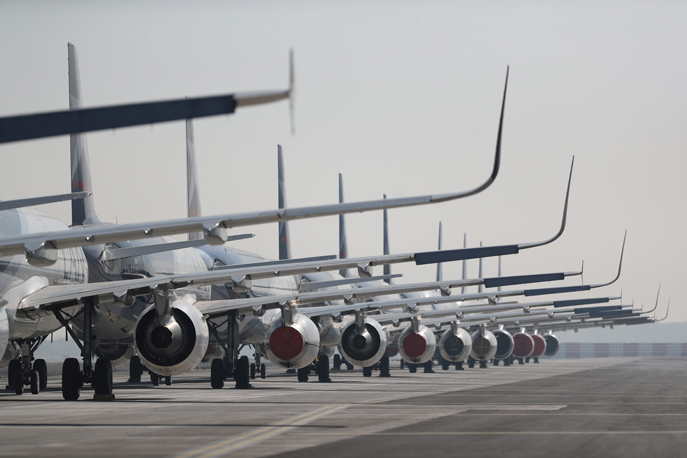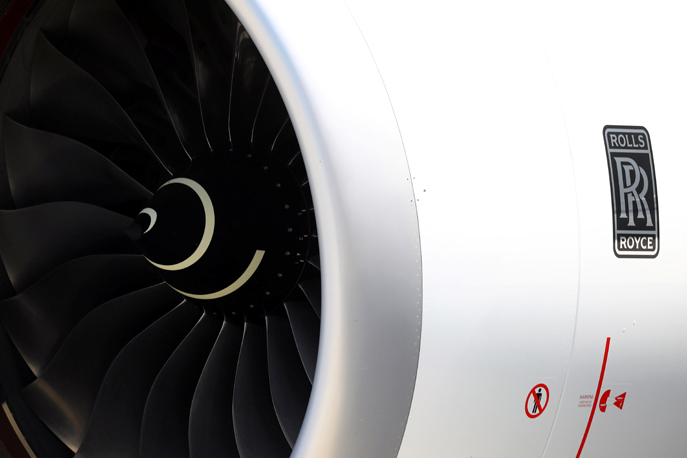With passenger numbers set to more than double by 2050, the aviation industry and policymakers are urgently seeking solutions to decarbonise air travel. Catherine Early reports on progress
With the global aviation industry fighting the loss of billions of dollars in revenue from the Covid-19-induced travel downturn, it is perhaps surprising that momentum on the fight against climate change has sped up rather than fallen away.
But even with the downgrading of air traffic forecasts, the sector will be transporting around 10 billion passengers a year by 2050, more than twice 2019 levels, according to the Air Transport Action Group.
New collaborations between governments and industry have sprung up in the past year, with a big focus on ramping up the use of sustainable fuels, which currently constitute less than 1% of total consumption across the industry. These include the UK’s Jet Zero Council, a sector-wide partnership of airlines, airports, research institutions, fuel manufacturers and three ministers from the UK’s departments for transport, and energy and industrial strategy.
This week Jet Zero announced a £15m competition to help companies pioneer new technologies to convert materials such as household rubbish, waste wood and excess electricity into sustainable aviation fuel. To qualify, solutions will need to offer emissions savings of more than 70% compared to conventional jet fuel.
In January, the World Economic Forum, which facilitates public-private collaboration, launched the Mission Possible Partnership, an alliance of climate leaders focused on identifying breakthroughs that can be achieved in the near term in the decarbonisation of heavy industry and transport. Aviation will be targeted through the existing Clean Skies for Tomorrow collaboration, under which 80 companies are engaging on routes to industry decarbonisation including sustainable aviation fuels (SAF).
In February, airline officials from companies includ ing American Airlines, United Airlines and Delta Air Lines met virtually with White House officials to discuss tackling aviation pollution and urge U.S. support for greener aviation fuel.
If you’d told me 18 months ago that this level of dedication was going to be in place in the midst of a global pandemic, I wouldn't have believed you
Although the industry's current climate targets, set in 2009, call for emissions to be halved by 2050, an increasing number of companies in the aviation value chain announcing commitments to reach net-zero by 2050, including the 13 airlines in the One World Alliance, Heathrow Airport, and aircraft engine manufacturer Rolls-Royce.
These efforts are being boosted by large corporates announcing plans to purchase SAF equivalent to all business travel with particular airlines, such as deals between Microsoft and Dutch airline KLM and Alaska Airlines, and similar agreements by Deloitte with American Airlines and Delta Air Lines.
“If you’d told me 18 months ago that this level of interest and dedication was going to be in place across the industry in the midst of a global pandemic, I don't think I would have believed you,” says Kevin Soubly, project lead for the WEF Clean Skies for Tomorrow programme.

A combination of factors has catalysed action, he believes, including increased demand for more sustainable travel from both the public and corporations, investors and governments. This has all come to a head with the pandemic, which has forced people to stay inside and think about what they want things to look like when economic activity returns in full, he says.
“By and large, the consensus is we want it to be more sustainable, we want to mitigate the effects of climate change, and that means changing how we do things and pushing forward increased energy transition,” he says.
One of the key barriers to the aviation industry achieving its net-zero ambitions is uptake of SAF. Currently comprising just 0.01% of aviation fuel, SAF costs two to four times as much as kerosene, which is artificially cheap due the fact that it pays no tax under the Chicago Convention. There is also a lack of supply: current SAF plants in the EU have a maximum potential output of 2.3m tonnes per year, but this meets only 4% of the total aviation fuel demand.
The European Union's decision in 2018 to ban palm oil in biodiesel and aviation fuels from 2030 over deforestation concerns has intensified the search for more sustainable alternatives to fill the gap. (See Indonesian rush to biodiesel sparks deforestation fears)
We need the policy signals now because our challenge is to attract investors to spend hundreds of millions of dollars
“We need the policy signals now because our challenge is to attract investors to spend hundreds of millions of dollarsto build first-of-a-kind SAF production plants,” said Jonathon Counsell, IAG group head of sustainability, speaking at a recent webinar run by the WEF.
Counsell, who helped broker the One World Alliance net-zero target, hopes that the group’s commitment will catalyse similar action from the rest of industry, which will in turn push governments to create policy to support them. It was industry lobbying that led the UK government to set up the Jet Zero Council, he said.
The European aviation sector is lobbying the European Commission and UK government on how the transition to sustainable aviation fuels (SAF) could be achieved. In October, 15 companies across the value chain published joint policy proposals, the first time such a diverse group had come together to back such policies. The initiative was led by the WEF’s Clean Skies for Tomorrow coalition.

Recommendations included public-policy support for innovation to advance SAF technologies; government-backed price floors for the early stages of SAF production to boost investment confidence; support for the development of SAF production facilities by directly de-risking investments; and an EU-wide mandate for a minimum amount of SAF to be added to the aircraft fuel to come into effect by 2025, and increase through to 2050.
The European Commission is due to publish its proposals for a SAF mandate in March. Norway and France already have a national-level SAF mandate, while Finland, the Netherlands, Germany, Spain and Sweden are considering various requirements on greener fuel.
Dick Benchop, chief executive of Schiphol airport, told the WEF webinar that it would not be possible to get widespread use of SAF without dialogue between governments and industry on policy and regulation. “Otherwise you’ll get a lot of initiatives – first plants and first developments – but to get it to scale, we need technology, infrastructure and deployment all working together,” he said.
I feel really good about our ability to contribute to decarbonisation of the aviation sector
Jennifer Holmgren, chief executive officer of biofuel manufacturer LanzaTech, understands the importance of collaboration. The U.S. Department of Energy’s Pacific Northwest National Laboratory supported the development of the technology behind LanzaJet, a subsidiary launched in 2020, to specifically target SAF production.
The company is now building a plant to convert ethanol to around 40m litres of aviation fuel in Georgia, U.S., which is due to start operating in late 2022. It has used an innovative financing strategy, under which its investors – Suncor, Mitsui and British Airways – have agreed to finance it all the way from demonstration plant through to commercial scale, when plants will be built in each company’s home country.
“That's important because then we don't have to stop, and by 2025 we should have about 400m litres of SAF. It means I feel really good about our ability to contribute to decarbonisation of the aviation sector,” says Holmgren.

Charles Perry, aviation lead for the COP26 Champions, points to the UNFCCC’s transport sector pathways, published in November, which outlines an ambition for SAF to reach 10% of all aviation fuel by 2030, with 20% of airlines by revenue signing up by 2023.
“This is a big step up on the global average from 0.01% now, but bear in mind that it’s a global average; Europe and the U.S. will need to be way in advance of 10% because that would be quite a stretch for developing countries to achieve by 2030,” he says.
Another move policymakers could make to incentivise quicker uptake of SAFs is to implement a cost of carbon. Holmgren says: “You have to include the carbon cost in the cost of kerosene, because the cost of fossil fuels will keep coming down as demand falls.”
We can’t shut down any technology alleys at the moment, we need to explore them all
Counsell agrees that a global carbon price would aid the decarbonisation of aviation. Together with the falling costs of SAF as more plants are built, this could bring SAF to cost-parity with kerosene in the next five to 10 years, he believes.
Industry commentators believe that other technologies such as hydrogen (see High hopes for Hydrogen) will be needed to truly decarbonise aviation. Hydrogen can be used with fuel cells to create electricity for short-haul flights, or it can be combusted in a gas turbine.
“We can’t shut down any technology alleys at the moment, we need to explore them all, because we might need two, three or four of them,” Dave Smith, director of technology at Rolls-Royce told the WEF’s webinar.

Holmgren agrees that several technologies could be needed, and therefore governments should leave targets and support mechanisms sufficiently flexible so that future innovations can benefit. However, she cautions that getting excited about “the next big bauble” can distract efforts from scaling solutions that already exist.
“We don’t want to forget about the things we can do today, that already make both environmental and economic sense. We cannot bend the curve by thinking about 2030 or 2040, we bend it by thinking about 2021, 2022 and 2023,” she says.
What are sustainable aviation fuels?
-
There are four primary SAF technologies: hydrogenated esters and fatty acids (made using waste oils); gasification (made using forestry offcuts); alcohol-to-jet fuels; and power-to-liquid/synfuels, whereby fuels are created using hydrogen and CO2 captured from industrial processes or directly from the air.
-
SAF is capable of reducing aviation carbon dioxide emissions by up to 80% in comparison to using fossil-based fuels. The International Civil Aviation Organization estimates 10-30% of aviation emissions compared with a 2050 business-as-usual scenario could be reduced through the use of jet biofuels, while 30-50% could come from synfuels or “e-fuels”.
-
Major players include LanzaTech, UK-based Velocsys and Norway’s Neste. Shell is also working on SAF, though it pulled out of a partnership for a UK plant with Velocsys in February to invest in the Varennes Carbon Recycling project, a waste-to-low-carbon-fuels plant in Quebec, Canada.
This article is part of the in-depth Sustainable Transport briefing. See also:
Rethinking the commute to work post Covid-19
Biden’s EV plan puts charge through U.S. auto industry
UK firms lend heft to getting electric vehicle revolution on the road
Can Chile avoid resource curse from lithium?
From cul-de-sac to second life for redundant car batteries
Will green hydrogen fulfill high hopes for trucking and shipping emissions?
Indonesian rush to biodiesel raises fears about spike in deforestation risk


